Roast Pork and Stuffing brings colour and comfort to the Christmas table, with golden crackling and a fruity filling that tastes like celebration.
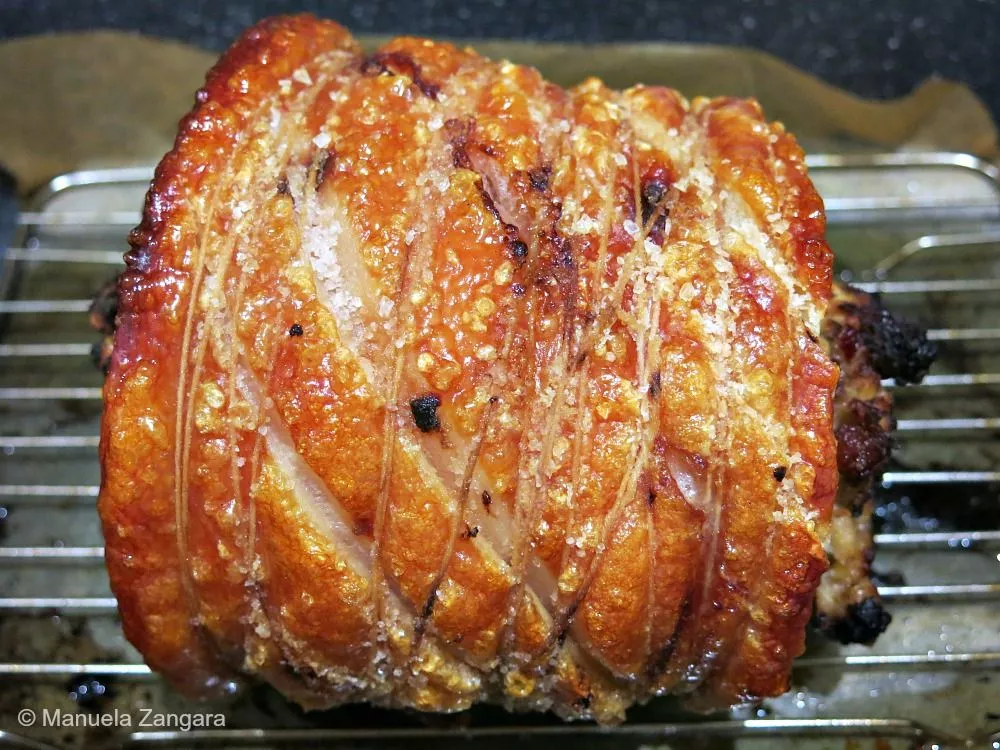
I’ve been meaning to share this Roast Pork and Stuffing recipe ever since I made it for Christmas Eve. I was so happy with how it turned out; the meat was tender, the stuffing rich and well balanced, and the crackling perfectly crisp.
Italians don’t usually make crackling, so this was my first real attempt, and I was thrilled when it worked so well. If you follow the recipe, you’ll get that same golden roast pork with stuffing and crisp crackling that makes every slice so satisfying.
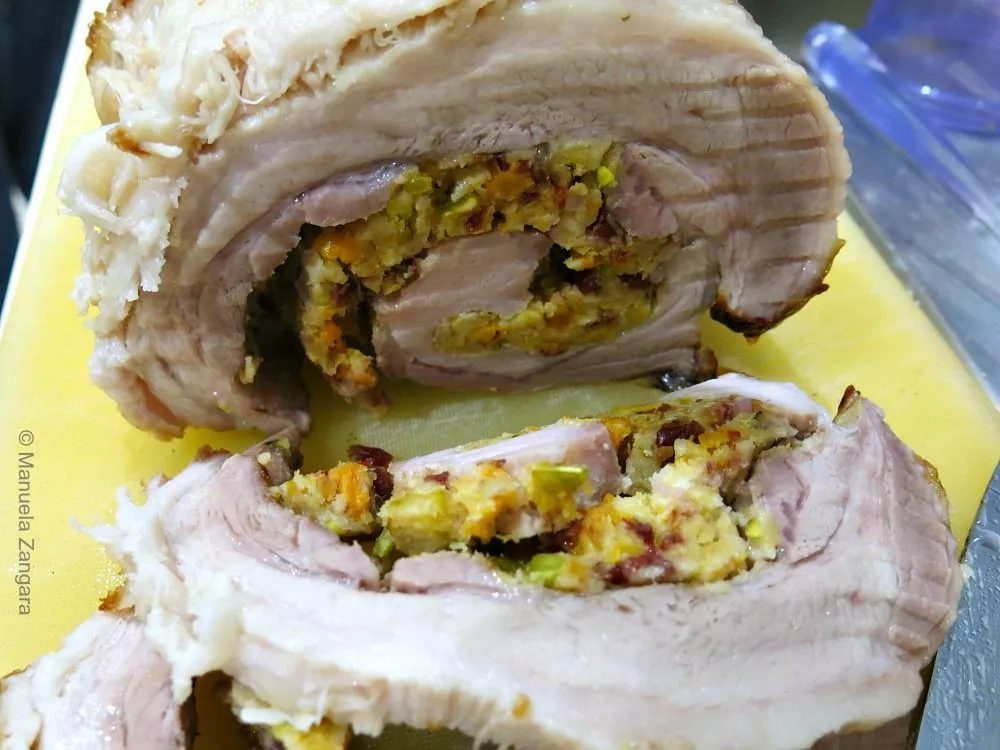
This stuffing is easy to make and full of flavour, with pistachios, dried apricots, and cranberries adding a light Middle Eastern twist. The mix adds sweetness and colour, turning this pork roast with stuffing into a festive centrepiece for Christmas or any family meal.
That night, I served our stuffed roast pork with Honey Glazed Baby Carrots and a Middle Eastern Chargrilled Pumpkin Salad. Please excuse the not-so-bright photos, but it was Christmas Eve, and we ate late. Besides, I didn’t want to make everyone wait while I set up all my gear for the perfect shot! I can guarantee, though, that this stuffed roast pork is absolutely delicious.
What Everyone Loves About This Roast
- Leftover slices taste incredible in sandwiches or tossed through salads the following day.
- Preparing the stuffing ahead of time allows for a stress-free cooking day when hosting family or guests.
- Rich pan juices from the roasting dish transform quickly into a flavourful gravy to drizzle over the pork.
Key Ingredients for Roast Pork and Stuffing
Pork Loin
Boned and rolled pork loin gives the best balance of tenderness and flavour. The natural fat keeps the meat juicy as it roasts.
Dried Apricots and Cranberries
The mix of apricots and cranberries adds colour and sweetness that pairs well with the pork’s richness.
Pistachios
Give light crispness and a soft, buttery taste that complements the fruit and herbs in the filling.
Find the complete list with measurements in the recipe card below.
How to Make Roast Pork and Stuffing
Step 1: Pat dry the roast with a paper towel. Untie and unroll the pork.
Step 2: Place, skin side up and uncovered, on a rack in a baking dish. Refrigerate overnight to dry the rind.
Step 3: The next day, heat the butter and oil in a frying pan over medium heat. Add the chopped onion and cook, stirring, for 5 minutes or until softened.
Step 4: Transfer to a bowl with the breadcrumbs, dried fruit, pistachios, sage, and eggs. Stir to combine and season with salt and pepper to taste.
Step 5: Take the pork out of the fridge and place it, meat side up, on a board.
Step 6: Cover the pork meat with the stuffing. Re-roll and tie firmly with kitchen twine.
Step 7: Put the roast on a rack, then pour hot boiling water over the rind. This will help with getting the perfect crackling. Pat dry with a paper towel.
Step 8: Rub the rind with vegetable oil and sprinkle generously with salt (coarse salt is a good option for this).
Step 9: Line a baking dish with baking paper and place the rack inside. Set the pork on top of the rack.
Step 10: Bake in a preheated oven at 240°C – 465°F for the first 50 minutes (until it crackles), then reduce the heat to 180°C – 350°F and cook for 30–35 minutes per kg, depending on how well you like your roast cooked.
Step 11: Once cooked, let the roast rest for 10 minutes before removing the crackling and slicing the roast.
Step 12: Serve warm with the crackling on the side.
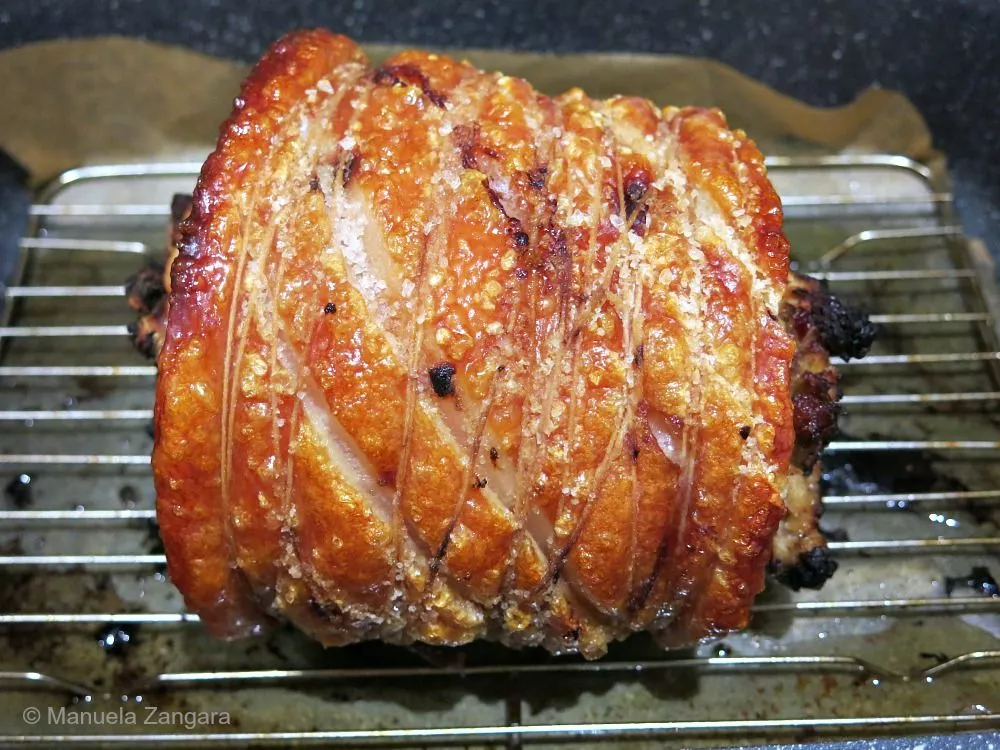
Frequently Asked Questions
Keep the rind uncovered in the fridge overnight, pour boiling water over it before roasting, pat it dry thoroughly, then rub it with oil and coarse salt.
Yes. Pork shoulder works wonderfully for stuffed roast pork as it has more fat, which keeps the meat tender and moist while roasting.
When it comes to the best stuffing for pork roast, I always go for a mix that feels festive but not heavy. Breadcrumbs, apricots, cranberries, pistachios, and sage work so well together.
Variations and Twists
Replace Pistachios with Walnuts or Pecans – Either nut adds crunch and a deeper, earthy flavour to the stuffing, complementing the sweetness from the dried fruit.
Include Orange Zest for a Citrus Note – A small amount of finely grated orange zest lifts the flavour of the stuffing and gives it a subtle festive aroma.
Swap Cranberries for Chopped Dates or Figs – Dates and figs give the stuffing a softer texture and deeper sweetness that pairs well with the sage and pork.
Add Sausage to the Stuffing – Mixing in some finely crumbled Italian sausage gives a more savoury stuffing and keeps it extra moist as it cooks inside the pork.
Extra Help from the Kitchen
Score the Rind Before Drying – Ask your butcher to score the rind or use a sharp knife to make shallow cuts before refrigerating overnight. This helps the salt and oil absorb evenly and produces uniform, crisp crackling.
Bring the Pork to Room Temperature – Take the pork out of the fridge about 30–40 minutes before roasting. Letting it rest at room temperature helps it cook evenly from the centre outwards.
Check the Stuffing Moisture – Before rolling, squeeze a little of the stuffing between your fingers. It should hold together without being too wet. If dry, add a spoonful of olive oil or a splash of water.
Save the Pan Juices for Gravy – Don’t discard the roasting pan juices. Strain them and use them as a base for a quick gravy or drizzle them lightly over the sliced pork before serving.
Storage and Shelf Life
Leftover roast pork keeps well in an airtight container in the fridge for up to 3 days. Reheat slices in the oven, covered with foil, to keep them moist and tender. The crackling is best stored separately to maintain its crisp texture. For longer storage, freeze the pork (without the crackling) for up to 2 months. Defrost it overnight in the fridge and warm it through gently before serving.
What to Serve with Roast Pork and Stuffing
Vegetable Sides – Honey-glazed carrots, roasted Brussels sprouts, and spiced pumpkin give the table a festive look and taste. Add parsnips or baby potatoes for extra comfort.
Festive Salads – Orange and beetroot salad offers a bright, fresh side to the roast, and pear and walnut salad enhances the balance of savoury and sweet on the plate.
Sauces and Condiments – Apple sauce, cranberry compote, or a light gravy made from the pan juices add flavour and moisture to the roast.
Bread and Grains – Soft dinner rolls or slices of toasted focaccia are perfect for serving alongside. Herbed rice or a small portion of chestnut stuffing completes the plate.
Drinks and Wine – Sparkling wine or prosecco brings a cheerful start to the meal. A glass of Chianti or Nero d’Avola pairs well with the roast and fruit stuffing.
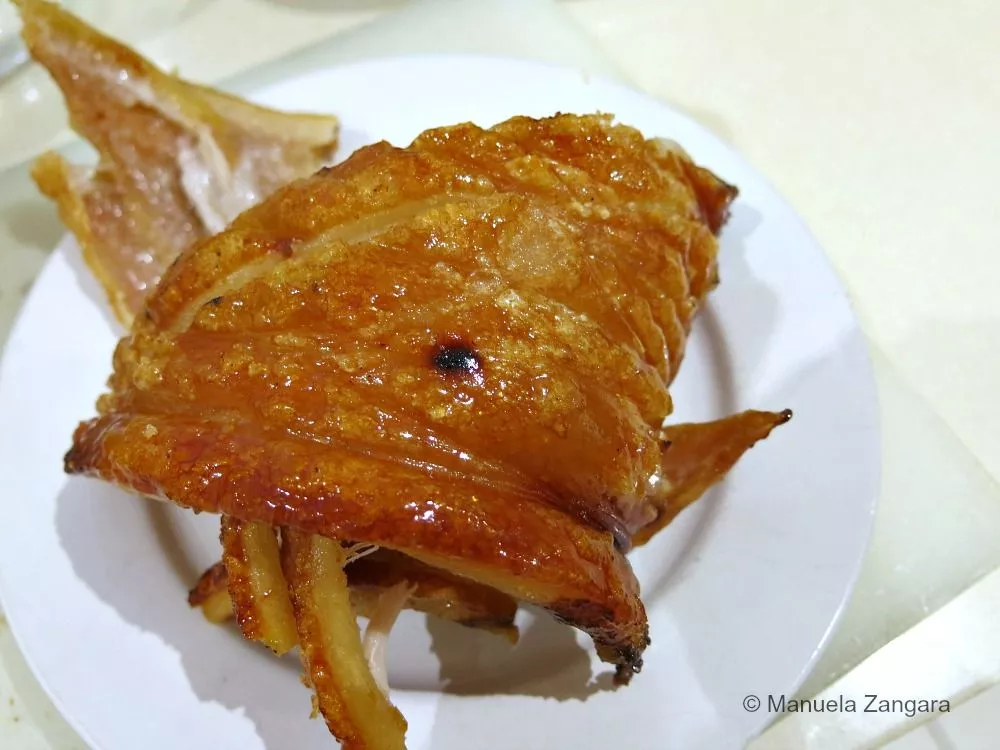

Roast Pork and Stuffing
Roast Pork and Stuffing brings colour and comfort to the Christmas table, with golden crackling and a fruity filling that tastes like celebration.
Ingredients
- 1.5 kg – 3 1/3 lbs. loin pork – boned and rolled
- 20 gms – 1 tbsp butter
- 1 tbsp extra virgin olive oil
- 1 red onion – chopped
- 4 cups white fresh breadcrumbs
- ½ cup dried apricots – chopped
- ½ cup dried cranberries – chopped
- 1/3 cup pistachios – chopped
- ¼ cup sage leaves – chopped
- 2 eggs – whisked
- Salt and pepper – to taste
- Coarse salt and vegetable oil – for the rind
Instructions
-
Pat dry the roast with a paper towel. Untie and unroll the pork.
-
Place, skin side up and uncovered, on a rack in a baking dish. Refrigerate overnight to dry the rind.
-
The next day, heat the butter and oil in a frying pan over medium heat. Add the chopped onion and cook, stirring, for 5 minutes or until softened.
-
Transfer to a bowl with the breadcrumbs, dried fruit, pistachios, sage, and eggs. Stir to combine and season with salt and pepper to taste.
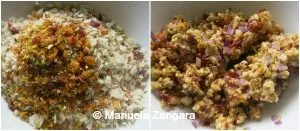
-
Take the pork out of the fridge and place it, meat side up, on a board.
-
Cover the pork meat with the stuffing. Re-roll and tie firmly with kitchen twine.

-
Put the roast on a rack, then pour hot boiling water over the rind. This will help with getting the perfect crackling. Pat dry with a paper towel.
-
Rub the rind with vegetable oil and sprinkle generously with salt (coarse salt is a good option for this).

-
Line a baking dish with baking paper and place the rack inside. Set the pork on top of the rack.
-
Bake in a preheated oven at 240°C – 465°F for the first 50 minutes (until it crackles), then reduce the heat to 180°C – 350°F and cook for 30–35 minutes per kg, depending on how well you like your roast cooked.
-
Once cooked, let the roast rest for 10 minutes before removing the crackling and slicing the roast.
-
Serve warm with the crackling on the side.
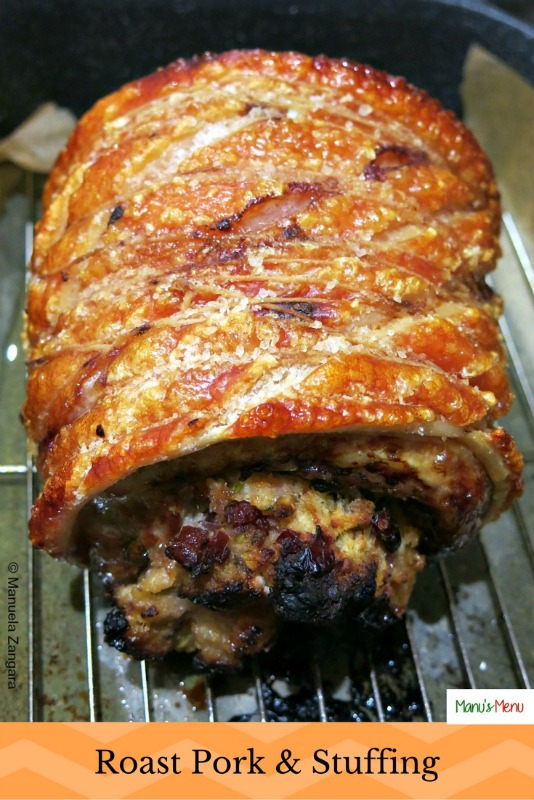








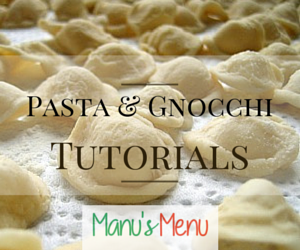









Leave a Reply